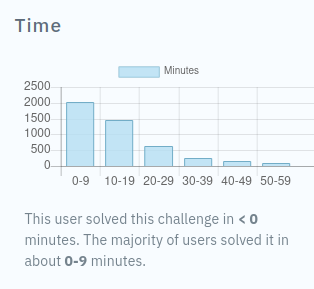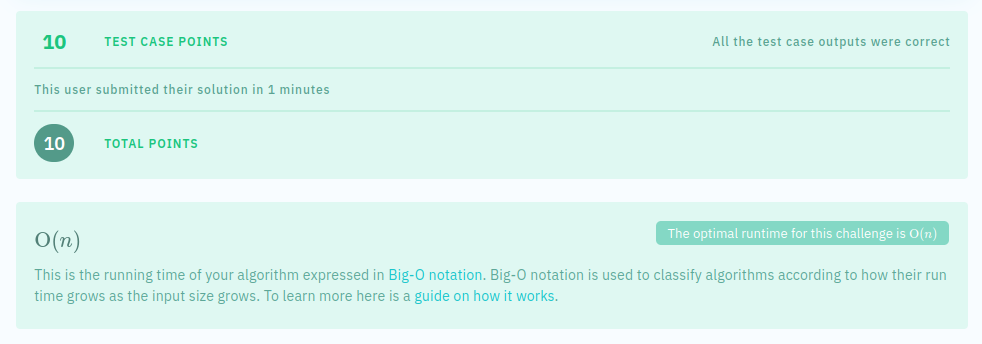CoderByte assessments fall to ChatGPT
Posted on Sat 04 February 2023 in Technical Solutions
Introduction¶
Today I'll be evaluating CoderByte and their publicly posted challenges against ChatGPT. I selected an easy, a medium and the single hard question from their list of open challenges and ran those through ChatGPT.
In previous articles in this series, I've shown how ChatGPT can easily solve interview assessments from LeetCode, TestGorilla, CodeSignal, Codility and HackerRank[hackerrankg]. I've said it in those articles, but I'll say it again: Companies need to evaluate their engineering candidates - all candidates, actually - apprpriately when they are hiring. Your engineers are using many tools to do their jobs and AI Tooling is one of the newest tools on the market. Removing a tool from your engineers is going to make them less efficient, and not testing your candidates on how they use these tools is going to mean you hire someone that had not fully demonstrated their capabilities.
ChatGPT should be treated as a tool, but it's also helpful to think of it as a junior level engineer. You need to check it's work. ChatGPT is known to be inaccurate, which is why it remains banned on Stack Overflow. There are a few instances where I had to do that below.
First a disclaimer: I was Director of Engineering at Woven Teams in 2022. Prior to that, I was a customer of Woven for over two years. I do not remember CoderByte being mentioned during my tenure and CoderByte does not seem to consider Woven a competitor, as Woven isn't listed as an alternative on their pricing FAQ page.
Easy - React Button Toggle¶
While I've tried to be mostly random in my selection of assessments during these tests, I intentionally selected this react assessment because I don't know react. I've liked these types of assessment questions in the previous articles because I means I can't apply my experience to "nudge" ChatGPT toward a solution.
The challenge here is to toggle a button between "On" and "Off". You're presented with a very small amount of boiler plate code.
I simply copy/pasted the prompt and the template into ChatGPT. It sent back this:
import React, { useState } from 'react';
import ReactDOM from 'react-dom';
function Toggle() {
const [toggle, setToggle] = useState(true);
function handleClick() {
setToggle(!toggle);
}
return (
<button onClick={handleClick}>{toggle ? 'ON' : 'OFF'}</button>
);
}
ReactDOM.render(
<Toggle />,
document.getElementById('root')
);
I copied that into the IDE provided by CoderByte and submitted the code.

This test took two minutes to complete. The bulk of that time was spot checking that ChatGPT didn't mess with the boiler plate code to badly.

The interesting this about the results is that even with the 10/10, the system says it only scored higher than 12% of other users. Does this mean that only 12% of the users passing this assessment are getting lower than a 10/10? To me, that's the sign of a bad assessment.

Medium - SQL Member Count¶
The medium challenge I selected was an SQL question. SQL is interesting, in my experience, in that the results returned on an assessment are a lot more uniform compared to a non-SQL coding assessment. This one wasn't a difficult one with joins.
The goal of this assessment was to return a list of names in alphabetical order, a count of the number of people that report to them, and the average age of their team members. I pasted the prompt, the expected table layout for the output and the table layout being selected from.
The first response was
SELECT ReportsTo, COUNT(ID) AS Members, AVG(Age) AS Average_Age
FROM maintable_YTTQH
WHERE ReportsTo IS NOT NULL
GROUP BY ReportsTo
ORDER BY ReportsTo;
This is where experience, and checking the results are important. The expected output showed that the average age should be an integer. It also showed that the average age column should be named Average Age not Average_Age (notice the lack of the underscore). I provided this guidance to ChatGPT
The AVG(Age) should be an integer not a float and The "Average_Age" field should be "Average Age" without an underscore.
It corrected both problems with a new query which I submitted.
SELECT ReportsTo, COUNT(ID) AS Members, ROUND(AVG(Age)) AS "Average Age"
FROM maintable_YTTQH
WHERE ReportsTo IS NOT NULL
GROUP BY ReportsTo
ORDER BY ReportsTo;

ChatGPT scored another 10/10.

Even with that extra round trip with ChatGPT, it took less than a minute to complete this assessment.

This assessment seems to have a slightly better split of user scores, which is progress I suppose.
Hard - Bracket Combinations¶
There is only one hard assessment available publicly. The goal for this assessment is to return the number of combinations you can make with a number of pairs of parenthesis. The example provided is:
The possible combinations of 3 pairs of parenthesis, namely: ()()(), are ()()(), ()(()), (())(), ((())), and (()())
I copied the prompt and boiler plate code into ChatGPT and it returned the following response:
def BracketCombinations(num):
from math import factorial
return factorial(2 * num) // (factorial(num) * factorial(num + 1))
# keep this function call here
print(BracketCombinations(input()))
Experience here says that is odd. Technically speaking, Python will allow you to have that import statemnet inside a function, but if I saw one of
my developers do it, I'd mention it during a code review. I was curious though and submitted it as is.
I also went back and told ChatGPT:
Write the function without importing
factorial
It replied with this function:
def BracketCombinations(num):
def fact(n):
result = 1
for i in range(1, n + 1):
result *= i
return result
return fact(2 * num) // (fact(num) * fact(num + 1))
# keep this function call here
print(BracketCombinations(int(input())))
I submitted this response too.
I only have one set of images for this challenge, because they both output exactly the same responses. Both solutions scored the same. Both solutions
were better than 35.1% of other users. Both solutions had an O(n) complexity.

Showing the complexity is a nice touch. I will admit that I was expecting the solution that imported factorial to be rejected because it's using a
built in function instead of rolling your own. Good for CoderByte for allowing a developer to use the built in libraries as an engineer would do in
a production environment, instead of adding a false constraint.

Copy pasting to CoderByte kept this close to a minute.
Final Thoughts¶
Another code only assessment tool has been shown to be ineffective. The one thing this one does, that others does show publicly, is the time it took to solve a problem. I'm very surprised that a majority of these were solved in under ten minutes. Even so, solving a problem in less than a minute will probably raise a flag of some kind for a hiring manager giving this type of assessment. I guarentee that time is visbile to them.
These three assessments show how well ChatGPT can be in being your virtual junior engineer. With the react question, I have no idea if it's the more efficient way to solve the problem but it works. With the SQL question, experience identified two small problems and allowed me to provide feedback and get a corrected query in seconds. The third question turned in two different ways of solving the problem. Apparently, according to CoderByte, bother of which perform exactly the same.
The total time it took me to run these three tests was under five minutes. That's a great tool to have in my pocket.